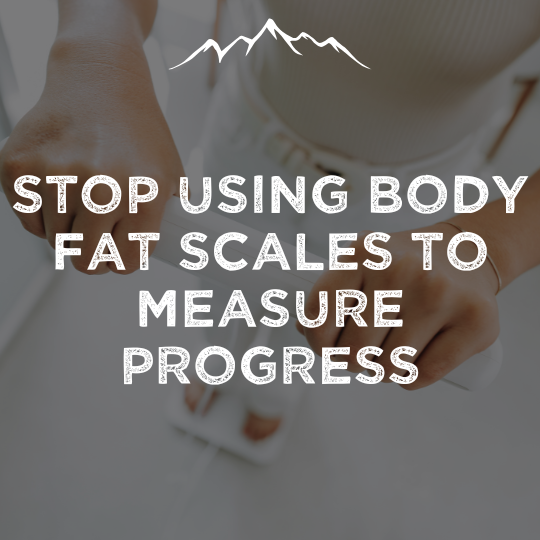Stop using body fat scales to measure progress
Great in theory, terrible in practice
Why use a body fat scales?
Recently, quite a few clients have come to us solely using a body fat report to measure progress.
Rather than weighing in regularly, they do a body fat analysis every few weeks as the sole marker of progress.
Most often, it’s an Inbody scale from their gym or local health store.
This seems great in theory, especially if you struggle with the mental aspect of weighing yourself daily.
How do body fat scales work?
Inbody, and all other bioelectrical impedance devices, measure body composition by running a small current through your body.
Because different tissues (fat, muscle, bone, etc) vary in water content, the current passes through tissue at different speeds.
The scale uses the “speed” data gathered from the current to estimate body composition.
Reliability of body fat scales
When testing and assessing the accuracy of BIA scales, they are measured against the gold standard of the DEXA scan.
The DEXA scan has an individual error rate of 3-5%.
BIA has an error rate when measured against a DEXA of 4-8%. Therefore, it has an error rate of 7-13% in assessing body comp when you account for the baked-in DEXA error rate.
This error rate is compounded in females and endurance athletes who have high water fluctuation throughout the month.
Significant changes in hydration levels show in BIA as bodyfat gained/loss instead of water change
Reliability Example
Let’s say you’re a 150-lb female who completed a six-month muscle-building phase, followed by an eight-week fat loss phase.
Starting weight:
150lbs and 30% bodyfat
End of build weight:
158lbs and 30% bodyfat (gained 5lbs of muscle and 3lbs of body fat)
End of fat loss phase weight:
150lbs and 27% bodyfat
She could step on the scale, and the BIA would read 150 lbs and 35% bodyfat, which is within the accepted individual variance rate.
Meanwhile, every other factor, including clothing fit, measurements, energy, and progress photos, indicates significant recomposition.
takeaways
Deciding to rely only on body fat scales to measure your progress is doing yourself a disservice. This may encourage you to make nutrition or training decisions based on faulty data
Instead, we recommend that you track daily weigh-ins and take progress photos and circumference measurements regularly to assess progress.
Citations
Science for Sport: Bioelectrical Impedance Analysis (BIA)
Buchholz, Andrea C et al. “The validity of bioelectrical impedance models in clinical populations.” Nutrition in clinical practice : official publication of the American Society for Parenteral and Enteral Nutrition vol. 19,5 (2004): 433-46. doi:10.1177/0115426504019005433
Saunders, M J et al. “Effects of hydration changes on bioelectrical impedance in endurance trained individuals.” Medicine and science in sports and exercise vol. 30,6 (1998): 885-92. doi:10.1097/00005768-199806000-00017


